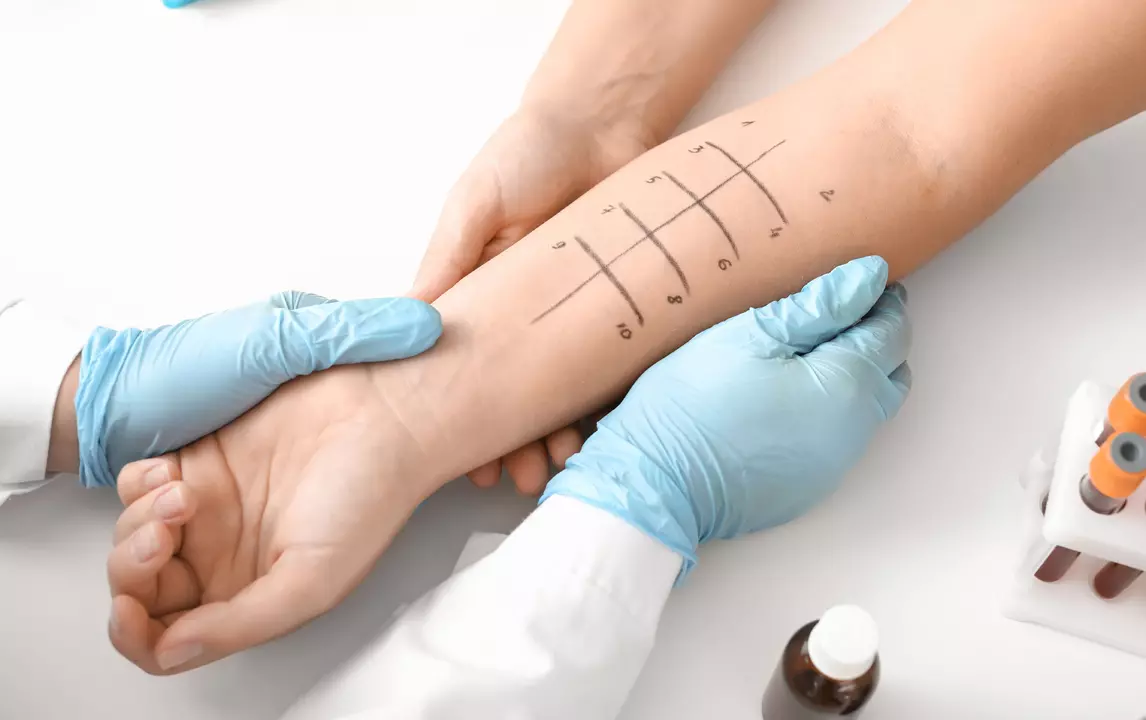Allergy Testing: Types, How to Prepare, and What Results Mean
Do you keep sneezing, breaking out, or feeling wheezy and wonder if allergies are the cause? Allergy testing can give clear answers fast. This page explains the common tests, what to expect, how to prepare, and how to read results so you can make smarter choices with your doctor.
How allergy tests work
There are three main kinds of allergy tests you’ll run into: skin prick testing, blood tests (specific IgE), and patch tests.
Skin prick test: A small drop of allergen is placed on the skin (usually the forearm). The technician pricks the skin through that drop. If you’re allergic, a tiny itchy bump appears within 15–20 minutes. It’s quick, cheap, and commonly used for pollen, pet dander, dust mites, and many foods.
Blood test (sIgE): This measures allergy antibodies in your blood. It’s useful when skin testing isn’t safe — for example, if you have widespread eczema, are on certain medications, or have a history of severe reactions. Results take a few days.
Patch test: Used to find delayed skin allergies, like reactions to cosmetics, metals, or topical medications. Small patches with allergens stay on your back for 48 hours, then the doctor checks for reactions up to 72–96 hours later.
Preparing, accuracy, and what results mean
Before testing, check meds. Antihistamines (like cetirizine, loratadine, or diphenhydramine) can block skin tests. Your doctor may ask you to stop them for 5–7 days. Certain antidepressants or heartburn drugs can also interfere—bring a full med list.
Wear short sleeves and loose clothes for easy access. For kids, bring snacks and a calm attitude; skin prick tests are quick and usually tolerated well.
Positive vs. meaningful: A positive test shows sensitivity but not always actual clinical allergy. For example, a positive dust mite test means your immune system recognizes dust mite proteins, but you might not have symptoms. Doctors match test results to your history—symptoms at certain times or places—to decide if a trigger is real.
False negatives can happen if you’re on antihistamines, have recent severe eczema, or the test panel missed the trigger. False positives are also possible, especially with very sensitive people or if tests are done without clinical context.
Risks are low. Skin prick tests may cause itching or a small local reaction. Severe reactions are rare, and clinics are equipped to treat them. Blood tests avoid that risk but cost more and need a lab.
Costs and access vary. Many insurance plans cover testing when ordered by a doctor. If cost is a concern, ask about testing panels, which can be more affordable than single tests.
Next steps after testing: avoid confirmed triggers, try targeted treatments (like nasal sprays or eye drops), or discuss immunotherapy (allergy shots or sublingual drops) for long-term changes. If results are unclear or symptoms are severe, see an allergist for a full plan.
Want help deciding which test fits you? Note your main symptoms, when they happen, and any medicines you take—then bring that list to your appointment. That simple step makes testing far more useful.
As a blogger who recently underwent allergy testing, I wanted to share my experience and offer some helpful tips on what to expect and how to prepare for the process. First, it's important to know that the most common types of allergy tests include skin prick tests, blood tests, and patch tests. To prepare for your appointment, it's crucial to stop taking any antihistamines or allergy medications a few days prior, as they can interfere with the results. During the testing, you may experience mild discomfort or itchiness, but rest assured it's generally a quick and safe procedure. Lastly, always consult with your healthcare provider for personalized advice and any specific preparation instructions.
